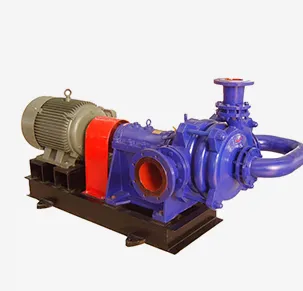English
- Afrikaans
- Albanian
- Amharic
- Arabic
- Armenian
- Azerbaijani
- Basque
- Belarusian
- Bengali
- Bosnian
- Bulgarian
- Catalan
- Cebuano
- Corsican
- Croatian
- Czech
- Danish
- Dutch
- English
- Esperanto
- Estonian
- Finnish
- French
- Frisian
- Galician
- Georgian
- German
- Greek
- Gujarati
- Haitian Creole
- hausa
- hawaiian
- Hebrew
- Hindi
- Miao
- Hungarian
- Icelandic
- igbo
- Indonesian
- irish
- Italian
- Japanese
- Javanese
- Kannada
- kazakh
- Khmer
- Rwandese
- Korean
- Kurdish
- Kyrgyz
- Lao
- Latin
- Latvian
- Lithuanian
- Luxembourgish
- Macedonian
- Malgashi
- Malay
- Malayalam
- Maltese
- Maori
- Marathi
- Mongolian
- Myanmar
- Nepali
- Norwegian
- Norwegian
- Occitan
- Pashto
- Persian
- Polish
- Portuguese
- Punjabi
- Romanian
- Russian
- Samoan
- Scottish Gaelic
- Serbian
- Sesotho
- Shona
- Sindhi
- Sinhala
- Slovak
- Slovenian
- Somali
- Spanish
- Sundanese
- Swahili
- Swedish
- Tagalog
- Tajik
- Tamil
- Tatar
- Telugu
- Thai
- Turkish
- Turkmen
- Ukrainian
- Urdu
- Uighur
- Uzbek
- Vietnamese
- Welsh
- Bantu
- Yiddish
- Yoruba
- Zulu
Telephone: +86 13120555503
Email: frank@cypump.com
Dec . 05, 2024 19:50 Back to list
Efficient Management of Sewage Systems and Pumping Solutions for Wastewater Disposal
The Importance of Sewage Pits and Pumps in Modern Infrastructure
Sewage management is an essential aspect of modern urban planning and environmental health. Among the various components that facilitate effective sewage management, sewage pits and pumps play a crucial role. Understanding their functions, importance, and maintenance can help communities improve sanitation, prevent environmental hazards, and foster sustainable development.
What are Sewage Pits?
Sewage pits, often referred to as septic tanks or sewage treatment pits, are underground chambers designed to treat wastewater from households or commercial establishments. When wastewater flows into a sewage pit, it undergoes a preliminary treatment process. Solid waste settles at the bottom, forming sludge, while lighter substances like grease float to the top, creating a scum layer. The partially treated effluent flows out of the pit and into a drain field, where it can naturally infiltrate the soil, undergoing additional purification processes.
The design and size of sewage pits vary based on the volume of wastewater generated and the soil characteristics of the installation site. A well-constructed sewage pit can effectively reduce contaminants, thereby protecting groundwater and maintaining public health.
The Role of Pumps in Sewage Systems
While sewage pits are pivotal for the initial treatment of wastewater, pumps serve as essential components for the efficient transport of sewage to treatment facilities or additional processing units. Sewage pumps are designed to handle the movement of wastewater, including solids and liquids. They can be submerged or stationary, depending on the specific needs of the sewage system.
Sewage pumps work by using a motor to create pressure that directs wastewater through pipes to its intended destination. This functionality is particularly critical in areas where gravity flow is insufficient, such as low-lying regions, or when transporting sewage over long distances. The efficiency and reliability of sewage pumps are vital for preventing blockages and overflow, which can lead to environmental contamination and health risks.
sewage pit and pump

Environmental and Health Implications
Improper management of sewage pits and the failure of sewage pumps can lead to severe environmental impacts. Inadequate treatment of wastewater can result in the contamination of nearby water bodies, affecting aquatic ecosystems and potentially entering the food chain. Moreover, unchecked sewage overflow poses significant public health risks, with diseases such as cholera, dysentery, and hepatitis emerging from exposure to untreated waste.
To combat these challenges, regular maintenance of sewage systems is essential. This includes routine pumping of sewage pits to remove accumulated sludge and inspect pumps for any signs of wear or malfunction. Local governments should establish guidelines for the size, construction, and maintenance of sewage pits to ensure they are effective and environmentally safe.
Innovations in Sewage Management
Advancements in technology are also revolutionizing the field of sewage management. New developments in sewage treatment technologies, such as biofilters and anaerobic digesters, are enhancing the efficiency of waste processing. These systems can complement traditional sewage pits and pumps by breaking down waste more effectively and reducing reliance on chemical treatments.
Smart pump systems equipped with sensors and monitoring technology allow for real-time tracking of wastewater levels and pump efficiency. This innovation not only increases operational efficiency but also minimizes the risk of overflows by providing alerts for potential issues before they escalate.
Conclusion
Sewage pits and pumps are indispensable components of modern sewage management systems. As urbanization continues to rise globally, the need for effective and sustainable waste management solutions becomes increasingly critical. The integration of advanced technologies, combined with regular maintenance and community awareness, will be key to ensuring the health of our environment and populations. By enhancing our sewage management practices, we contribute to cleaner water sources, improved public health, and a more sustainable future. Investing in these systems today is an investment in the well-being of our communities for generations to come.
-
Horizontal Split Case Pump with GPT-4 Turbo | High Efficiency
NewsAug.01,2025
-
ISG Series Pipeline Pump - Chi Yuan Pumps | High Efficiency, Durable Design
NewsAug.01,2025
-
Advanced Flue Gas Desulfurization Pump with GPT-4 Turbo | Durable & Efficient
NewsJul.31,2025
-
ISG Series Vertical Pipeline Pump - Chi Yuan Pumps | Advanced Hydraulic Design&Durable Construction
NewsJul.31,2025
-
ISG Series Vertical Pipeline Pump - Chi Yuan Pumps | Energy Efficient & Low Noise
NewsJul.31,2025
-
pipeline pump - Chi Yuan Pumps Co., LTD.|High Efficiency&Low Noise
NewsJul.31,2025










